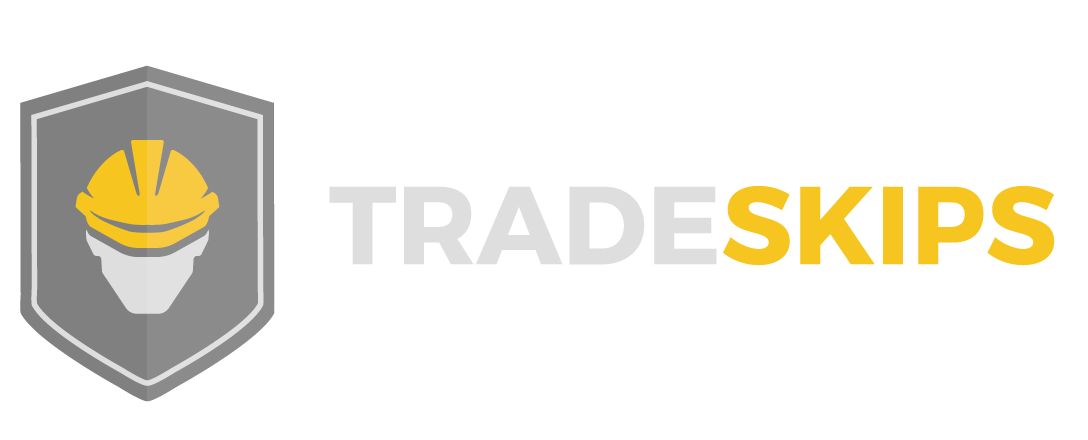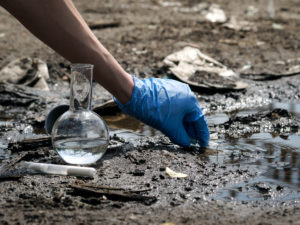
Understanding Your Waste Analysis Report
Your waste analysis report gives you a breakdown of the waste analysis process, the results of the tested waste and the classification your waste has received. This document is essential for tracing the reasons behind your waste classification and understanding how you should proceed in its disposal as a consequence.
The only problem is that some reports can be difficult to read if you are unfamiliar with their language.
In this article, we will go through some of the more confusing parts of your waste analysis report and explain each section and process as simply as possible.
The Introduction
In the introduction of your report, the waste analyser will recap where your test samples have come from, when they were approached to do the tests and the given proposal reference for the work to be carried out.
It is worth checking that this information is accurate and, if an email correspondence is referenced, you may wish to file it with this report for future reference. Keeping track of your dates and correspondence is a wise idea should anything unexpected occur in the future.
Sample Collection
In this section, the waste analyser will state the number of samples taken from a number of sites. They will specify how the samples were taken, contained and labelled as well as how they were stored before testing.
How Many Areas will Samples be Taken From?
The number of areas sampled depends on the type of waste you are disposing of and the size of your site. For example, if you were disposing of material from a series of filter beds, samples may be taken from one bed and be considered representative of the other beds. However, if your site varies over a large area, samples may be taken from more than one area.
The aim is to take enough samples to be representative of your waste as a whole. If all your waste is similar and stored in similar areas, only one area will need testing. Deciding how many areas to test is up for discussion between you (the client) and the waste receiver (who will take the waste for disposal). Once you have reached a decision on how many areas to test you can start taking samples.
Taking Waste Samples
Just as the number of areas to be tested must be representative of the site as a whole, the number of samples taken from each area must also be representative. Multiple samples are taken to substantiate test results and identify any anomalous results. This ensures fair and accurate testing.
The waste analysis company will advise you on how many samples will be required and will also provide sampling instructions and containers. Once you have taken each sample, the container must be accurately labelled to identify it later.
Additional samples may be required to enable further statistical analysis.
For more information and instructions on how to accurately determine how many samples you should take, see Waste Classification: Guidance on the classification and assessment of waste (1st Edition 2015), Appendix D Waste Sampling.
Waste Classification
In this section of your report, the waste analyser will outline the methods used to identify the composition of the waste and how it should be classified based on their results. They will also take into account all the knowledge given on the origins of the material.
A material must be assessed based on its chemical properties and given an appropriate List of Waste (LoW) Code before it can be disposed of as waste. This code is then used to decide which further assessments are required to determine the chemical composition of your waste. Once this testing is complete, the waste can be assigned a LoW Code and a description of the hazardous properties (if any).
What is a LoW Code?
A LoW code is a 6 digit code that can be found in the List of Wastes. LoW codes have been transposed from the European Waste Catalogue (EWC) codes into UK law. So, essentially, an EWC code and a LoW code refer to the same thing, they are just different names.
The first two digits of a LoW code indicates the chapter the code can be found in. There are 20 chapters. Chapters 1-12 and 17-20 identify the source generating the waste. For example, Chapter 1 is ‘wastes resulting from exploration, mining, quarrying, physical and chemical treatment of minerals.’
If no appropriate waste code can be found in these chapters, it may be found in chapters 13-15. Chapter 16, Wastes not otherwise specified in the list, is the last chapter to be checked for a code. If the waste isn’t in Chapter 16, the 99 code must be used in the section of the list corresponding to the activity identified at the beginning (Chapters 1-12 and 17-20).
A LoW code marked with an asterisk (*) is considered a hazardous waste.
Absolute, Mirror Hazardous and Mirror Non-Hazardous Entries
Some wastes are always hazardous and are known as ‘absolute hazardous’ entries. Similarly, some waste are always non-hazardous and are known as ‘absolute non-hazardous’ entries.
Wastes that may be hazardous or non-hazardous depending on the assessment of hazardous properties in the waste are called ‘mirror hazardous’ and ‘mirror non-hazardous’ wastes.
Absolute Entries
Waste that is classified as ‘absolute hazardous’ must be assigned that code. Any further assessment will not change this code. However, you must analyse your waste (or, rather, have your waste analysed by a third party) to determine the hazardous properties the waste displays for your waste consignment note.
In most cases, waste that is classified as ‘absolute non-hazardous’ will not require any further testing. However, some entries may be linked to other entries where additional consideration should be taken. It is important that you should consider all possible waste classifications and take the appropriate steps to ensure that you assign your waste the correct code.
Mirror Hazardous and Mirror Non-Hazardous Entries
Waste that may be hazardous or non-hazardous depending on its chemical composition is classified as either a ‘mirror hazardous’ or ‘mirror non-hazardous’ waste. This classification indicates that chemical analysis is required to identify the LoW code and complete the hazardous waste consignment note.
If the composition of a waste is not known it should be given a ‘mirror hazardous’ entry, until it is proven that the waste is not hazardous.
Laboratory Testing
The waste analysis company will schedule a programme of chemical testing on the samples for a range of potential contaminants. This process will characterise the material composition of the waste and will provide the most appropriate LoW code.
In this section, you will be provided with a table specifying which determinands have been tested for and the number of tests carried out.
What is a ‘Determinand’?
A determinand is essentially the thing being tested for. This could be a metal or a compound; it might be a physical property such as mass, pH or moisture density; or it could be a biological marker such as a particular type of bacteria. In this case, the determinands are the compounds the waste is made up of.
The determinands found will determine the waste classification code applied. So, if the determinand asbestos is found to be present in a concentration above the acceptable threshold, this sample will be deemed hazardous and given a hazardous waste code accordingly.
Categories of Hazardous Waste
There are 16 categories of hazardous waste. These include:
- HP1 – Explosive
- HP2 – Oxidising
- HP3 – Flammable
- HP4 – Irritant
- HP5 – STOT (Specific Target Organ Toxicity)
- HP6 – Acute Toxicity
- HP7 – Carcinogenic
- HP8 – Corrosive
- HP9 – Infectious
- HP10 – Toxic for Reproduction
- HP11 – Mutagenic
- HP12 – Release of an acute toxic gas
- HP13 – Sensitising
- HP14 – Ecotoxic
- HP15 – Waste capable of exhibiting a hazardous property listed above not directly displayed by the original waste
- HP16 – Assessment of persistent organic pollutants
Each of these describe the hazardous properties found in your waste. Within these categories are hazard statement codes which give more specific descriptions of the hazard. For example: HP7 is the code for carcinogenic hazardous waste and Carc. 1A; H350i, ‘may cause cancer by inhalation’ is the statement.
Number of Tests
Just as multiple waste samples are taken to substantiate test results, each determinand is tested multiple times. This means that any anomalous results can be ruled out or further tests may be carried out.
Additional Assessment of Materials
Following the initial classification results, you may require additional assessments of the waste. This may be because your waste receiver has raised a query. If this is the case, additional samples will be taken and further analysis will be carried out.
In this section of the report, the waste analysis company will outline the reasons for the additional assessment including the original results and LoW code(s). They will also provide an updated classification and the reasons behind this new classification.
Often, additional assessments are required for further statistical analysis. This will determine whether a substance is present within the acceptable threshold (and is therefore non-hazardous) or not (and is therefore hazardous).
The Test Report
This section forms the bulk of any waste analysis report and provides you with a detailed analysis of the presence of each determinand in every sample. If additional assessments were required, the full test reports for these samples will also be included and supercede the original report. This means that the information in the initial report is effectively replaced by the new results.
Waste Classification Report
Your waste classification report will begin by telling you the classification of your waste using its LoW code. If your waste is hazardous, it will go on to provide you with the hazardous waste classification and the hazard statements hit. It will also tell you which determinand is the cause of the hazardous properties.
This report will list the determinands tested for and their results. If a substance is hazardous but the concentration falls within the permitted thresholds, this result will be marked as ‘ignored’.
If a result has been ignored, an explanation will be given, most often ‘<LOD’. This stands for ‘limit of detection’ which means that this is the lowest level of a substance that can be detected by a method. Essentially, this number is low enough to have no real impact on the results.
Now that you have your LoW code, you can arrange for your waste to be transported to the appropriate waste receiver.
In Brief: A Summary of Your Waste Analysis Report
Introduction
- Proposal reference
- When the waste analysis company were approached to do the tests
- Where the samples have come from
- Reference to any other correspondence
Sample Collection
- The number of samples taken from the number of sites
- How the samples should be taken, contained and labelled
- How the samples were stored
Waste Classification
- The methods used to identify the composition of your waste
- How the waste should be classified based on the results of the tests
- Any other knowledge of the source of the waste
Laboratory Testing
- Schedule of the programme of chemical testing
- A table of the determinands and the number of tests carried out for each
Additional Assessment of Materials
- Additional samples to provide an updated classification
- The reasons behind the new classification
Test Report
- In depth report covering every test on every sample
Waste Classification Report
- The LoW code applied to your waste
- If your waste is hazardous, the hazardous waste classification, hazardous statement and relevant determinand will also be included





